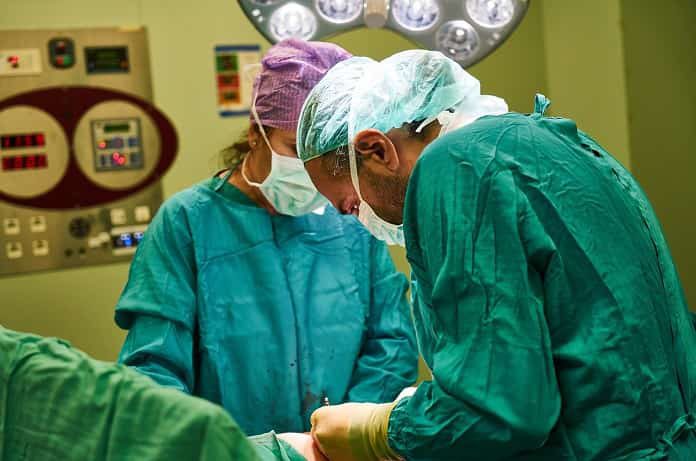A recent systematic review shows how nerve transfer surgery can help those afflicted with facial nerve paralysis following cancer surgery.
In cancer surgery, the removal of the tumor is the overarching priority, and in many instances, the surrounding structures have to be necessarily sacrificed. In addressing malignancies of the parotid gland (the large salivary gland in front of the ears) or in pontine regions of the brain, the facial nerve is more often than not also partially or completely excised. The facial nerve for its part powers most of the muscles on its half of the face, and the resulting paralysis can lead to devastating consequences. Besides being unable to move the muscles in half of their faces, patients may end up with drying eyes because their eyelids do not close. They may also have trouble eating, as the muscles of the mouth cannot contract to hold food in.
Facial Re-animation
Numerous strategies are employed to treat facial nerve paralysis, and facial re-animation is one of the most popular modalities. Surgeons use a technique called interposition nerve grafting, where the tumor-free nerve ends are combined with nearby uninvolved nerves. Masseter nerve grafting is a common procedure where cut branches of the facial nerve are attached to the nerve that is responsible for clenching the jaw. With this ‘re-wiring’, the neuronal electrical flow becomes re-established, and patients can be trained to close their eyes or smile by the act of biting down.
How Effective is This Procedure?
In the December 2017 issue of JAMA Facial Plastic Surgery, researchers published a systematic review of previous studies, analyzing 13 articles and reports that detailed the outcomes of masseteric nerve transfer surgery. Post-operative follow-ups of 183 patients consistently reported good results in two key outcomes, in the ability to keep food in the oral cavity (oral competence) and movement of the face (nerve recovery).
However, we must remember that even the best results are far from perfect; patients with facial nerve paralysis who undergo this procedure would also have to undergo rigorous rehabilitation to train themselves to move a different set of muscles—and the asymmetry of the face may still be evident. But for patients who have already endured cancer surgery, even a partial recovery of function will have tremendous physical and psychological benefits.
Written by Jay Martin, M.D.
Reference: Murphey, Clinkscales and Oyer. “Masseteric Nerve Transfer for Facial Nerve Paralysis: A Systematic Review and Meta-analysis”. 2017. JAMA Facial Plastic Surgery. Doi: 10.1001/jamafacial.2017.17180



